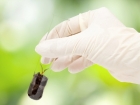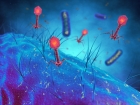Press monitoring
Experimental brain-on-a-chip better screens brain cancer treatments
3.6.2022 | Press monitoring
The blood-brain barrier (BBB) is a vital line of defense to keep your brain safe from toxins, but frustratingly it can sometimes be too restrictive, keeping important drugs out. Researchers at MIT have now demonstrated an accurate new model of how this barrier works, which should enable new treatments for brain cancer.. Scientists have...
New artificial enzyme breaks down tough, woody lignin
1.6.2022 | Press monitoring
A new artificial enzyme has shown it can chew through lignin, the tough polymer that helps woody plants hold their shape. Lignin also stores tremendous potential for renewable energy and materials. In nature, fungi and bacteria are able to break down lignin with their enzymes, which is how a mushroom-covered log decomposes in the forest. Enzymes...
Wastewater-borne DNA reveals endangered species in fish markets
30.5.2022 | Press monitoring
Despite protective measures being in place, endangered fish species are regularly caught then sold in open markets. And while visually searching them out can be difficult, a new technology could more easily allow authorities to know which species are being sold at one location. Aquatic animals are constantly releasing their DNA into the water, in...
Lab-grown plant matter marks a step towards 3D-printable wood
27.5.2022 | Press monitoring
Chopping down trees and processing the wood isn’t the most efficient or environmentally friendly way to make furniture or building materials. Scientists at MIT have now made breakthroughs in a process that could one day let us 3D print and grow wood directly into the shape of furniture and other objects. Wood may be a renewable resource, but...
Polymersomes efficiently deliver siRNA to treat breast cancers in preclinical model
25.5.2022 | Press monitoring
Small interfering RNAs or - siRNAs - hold promise to treat tumors, through their ability to specifically knock down oncogenes that promote tumor growth without the toxicity that accompanies chemotherapy. However, the siRNAs need a delivery vehicle to protect them from degradation and clearance on their journey through the bloodstream to the cancer...
Gene-edited tomatoes could be a new source of vitamin D
23.5.2022 | Press monitoring
Tomatoes gene-edited to produce vitamin D, the sunshine vitamin, could be a simple and sustainable innovation to address a global health problem. Researchers used gene editing to turn off a specific molecule in the plant's genome which increased provitamin D3 in both the fruit and leaves of tomato plants. It was then converted to vitamin D3...
Pre-made stem cells may be pulled off the shelf to treat aggressive cancer
20.5.2022 | Press monitoring
The idea of using stem cells engineered to target tumor cells is starting to gain traction as a way of tackling difficult-to-treat cancers, and highly aggressive brain cancers known as glioblastomas (GBMs) are a prime candidate. The trouble is that glioblastoma and other aggressive cancers can advance very rapidly, offering a very short window...
Tiny dental nanobots generate heat to deep clean the teeth
18.5.2022 | Press monitoring
The buildup of bacteria deep in our teeth can cause infections in difficult-to-reach areas, and scientists at the Indian Institute of Science have developed a set of tiny cleaning robots they believe can tackle this problem. The nano-sized machines can be steered with a magnetic field into microscopic channels in the teeth and kill bacteria with...
Phage Used to Clear Antibiotic-Resistant Lung Infection for Cystic Fibrosis Patient
16.5.2022 | Press monitoring
In recent years, investigators have identified new wild-type phage strains and molecular mechanisms to enable researchers to engineer phage viruses to target specific bacteria. Now, for the first time, researchers have successfully used bacteriophages to treat an antibiotic-resistant mycobacterial lung infection, clearing the way for a young...
Novel supramolecular CRISPR–Cas9 carrier enables more efficient genome editing
13.5.2022 | Press monitoring
CRISPR-Cas9 is considered a revolutionary gene editing tool, but its applications are limited by a lack of methods by which it can be safely and efficiently delivered into cells. Recently, a research team from Kumamoto University, Japan, have constructed a highly flexible CRISPR-Cas9 carrier using aminated polyrotaxane (PRX) that can not only...






























